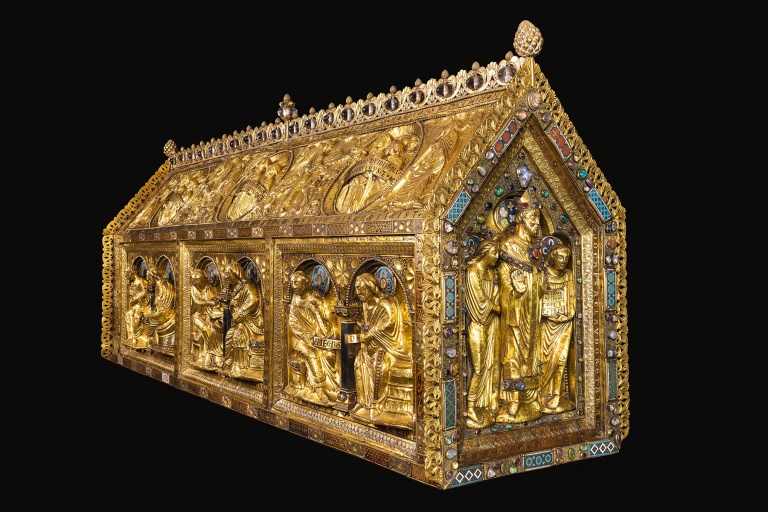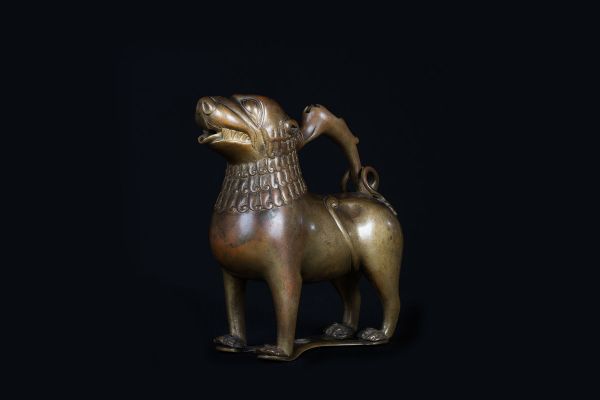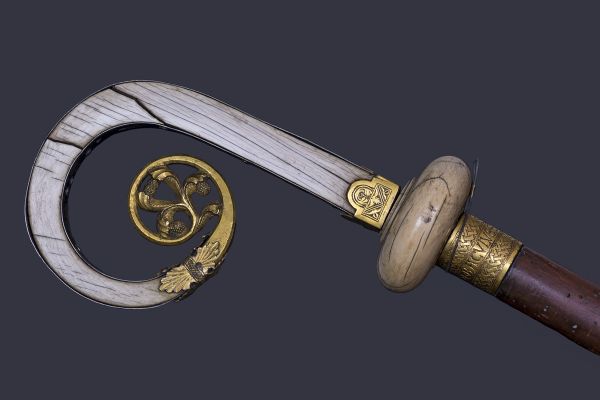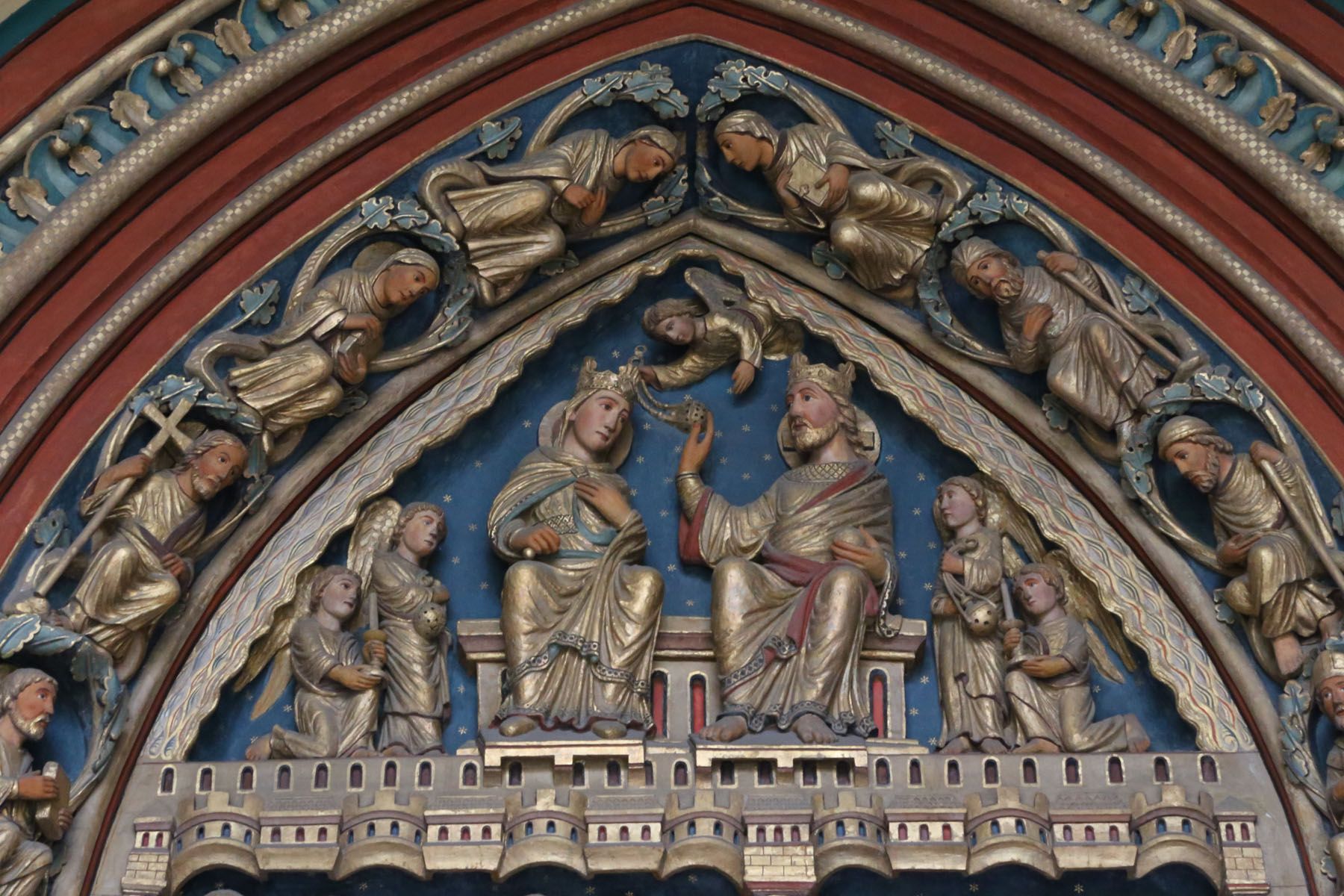Highlights
The Basilica can be visited daily (entrance Keizer Karelplein) in combination with an entrance ticket for the Treasury.
Come and visit the secluded cloister and garden, the crypt with the tomb of Servatius and the Treasury with the famous Shrine of Servatius and many other works of art.

Treasures
Of course, there is much more to see: Servatius’ pilgrim's staff, his pectoral cross, the saint’s own chalice and travelling altar, many relics and liturgical objects. The Treasury also features a famous collection of oriental silk fabrics, dating from the 4th to the 15th century. Or admire our various special reliquaries made of ivory, precious metal or in the shape of ostrich eggs, coconuts, caskets or horns.


Location of the Treasury
The church treasury is located (at least since the year 1340) in the Chapter’s so-called double chapel, adjacent to the church’s cloister. In 1873, the Treasury moved to the former chapter house in the western cloister, restored by the famous Dutch architect Pierre Cuypers, and to the former refectory in 1895. In 1930, the Treasury was expanded with an extra space on the north side and reopened as a 'Museum of Religious Art'. After the major restoration of the basilica, the Treasury was returned to its original location in 1982, with exhibition areas on two levels.


